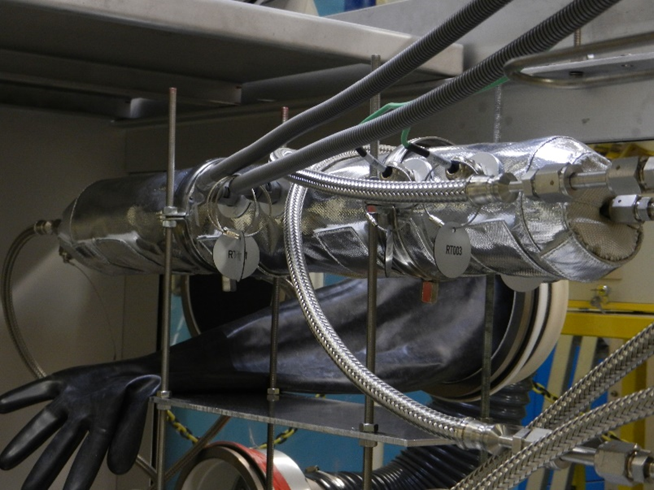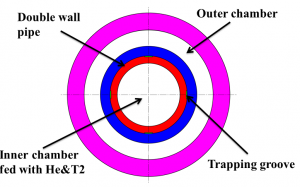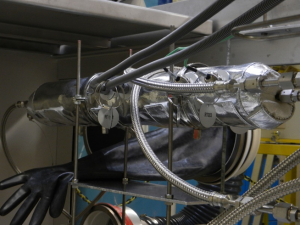
TRANSAT partners recently researched on how an active barrier system could be implemented to prevent tritium migrating through material layers.
The proof of concept is realised in a double wall heat exchanger configuration. The activities are focussed on the evaluation of the tritium permeation from the inner chamber (pipe) to the outer chamber through the pipe walls. The efficiency of tritium removal through the grooves, realised on the outer surface of the inner pipe, which are continuously purged or pressurised with hydrogen is evaluated by tritium assay.
Operation principle (visual) and anti-permeation cell under evaluation at KIT Tritium Laboratory (picture).
Four anti-permeation cells having 2, 4, 6 and 8 longitudinal grooves have been manufactured and the efficiency of tritium removal through the grooves versus trapping surface of the grooves is measured.
The design of the anti-permeation cell is realised such as the reduction of the heat transfer coefficient is less than 10%.
The ultimate goal is to evaluate the feasibility of implementing such an active barrier in a steam generator, tailored for a CANDU station, as a final barrier against tritium release into the environment.
Post written by Ion Cristescu from KIT and TRANSAT partner.



